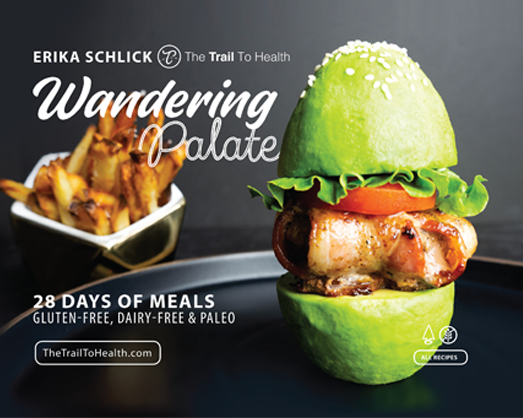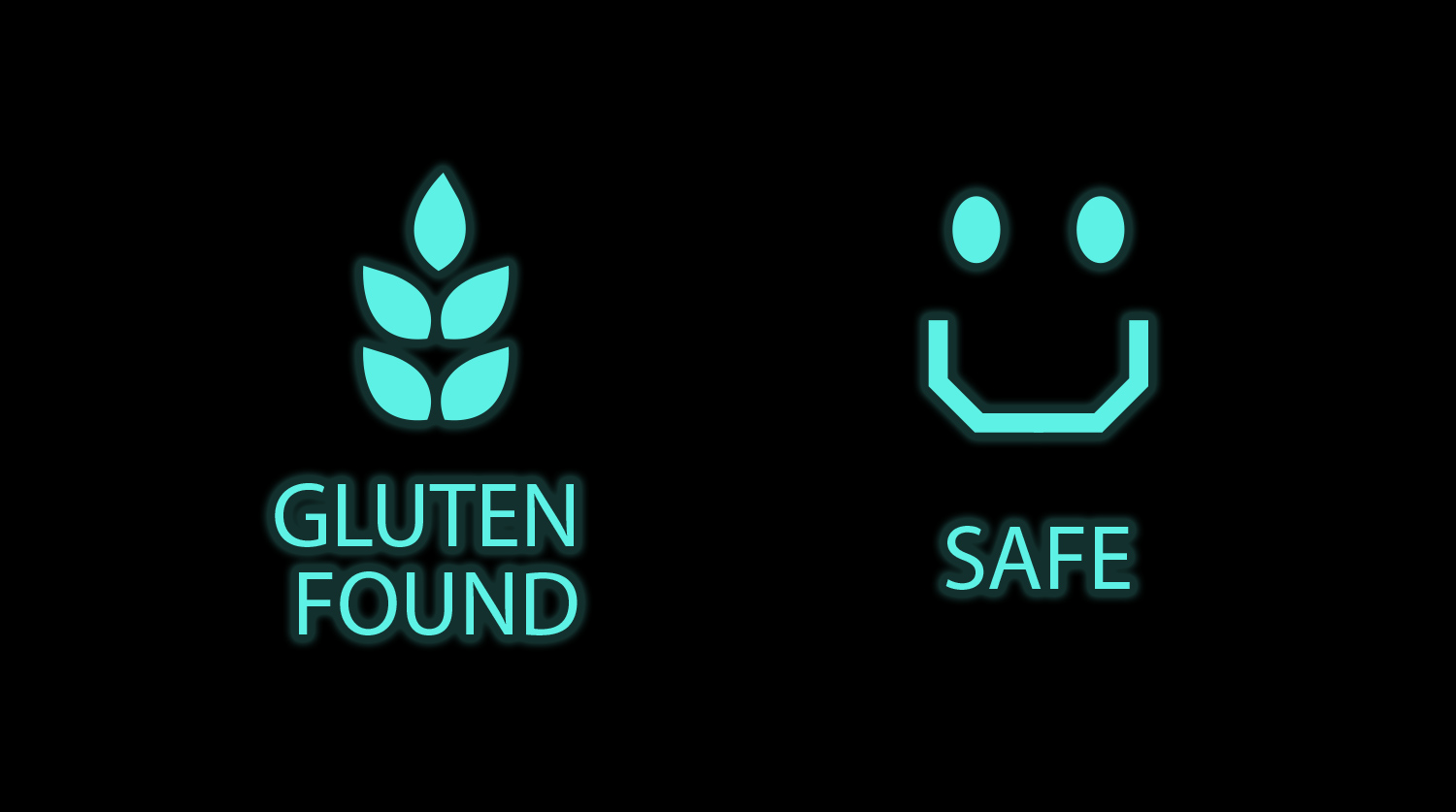Gluten Free In A Gluten Filled World
/Gluten free seems to have become such a popular diet trend lately, but it can really be a hard world to live in if you are avoiding gluten for your health. I have been gluten-free since 20212 and somehow I was still spending about 30% of my life glutened no matter how hard I try to avoid it.
So how does this keep happening? Here are some of the top concerns when trying to eat gluten free.
Cross Contamination Is A Nightmare
Cross contamination happens when microscopic or small crumbs of gluten get on your food. This can happen from using the same cutting board as something that had gluten, using the same knife, using plastic or wood cooking utensils that cooked gluten, using the same grill, the same oil, a dish sponge, you get the idea. If gluten has touched it, it can be a source of cross contamination, even if it's been washed. Some restaurants are really great and know how to handle gluten cross contamination, some try to be great, but just are not 100%.
Cross Contamination can also happen when food products are processed on shared manufacturing lines or facilities. If an item is made in a facility with wheat, I don’t eat it. It likely always has cross contamination. Sometimes manufacturers use good manufacturing processes to clean the lines well before they process their food, but even that is risky and I usually don’t take the risk.
There are also certain foods that are at high risk of having cross contamination before they get to a manufacturing facility such as grains, especially oats, which are hard to keep gluten free because of the nature of the fields and how they are processed. Nuts and spices are also notorious for gluten cross contamination. I can’t tell you how often I have been glutened by spices or nuts that should be gluten free.
My number one tip is to use to avoid find hidden cross-contamination is my Nima Partners Gluten Sensor!
And the best part is for the entire month of April 2022, the Sensor is 30% off with free shipping so now is the time to upgrade your life. Use code THETRAILTOHEALTH for 30% off this month only.
Certified Gluten Free Foods Actually Have Gluten
This one surprises me every time I catch it. You would think that a food labled gluten free, should be gluten free but so often this is not the case. Fortunately, I have been able to reduce the amount of times that this happens thanks to my Nima Partners Gluten Sensor, but I can’t tell you how many “gluten free foods” actually have gluten in them!! Even foods that are certified gluten free! I would honestly say about 30% of gluten free packaged foods have gluten in them. This is very serious for someone trying to follow a gluten free diet for their health!
GFCO certifies companies and manufacturers worldwide using the strictest standards for certification at 10 ppm or less. My Nima sensor picks up gluten 20ppm or more. So how has my Nima Partners Gluten Sensor picked up gluten in GFCO food? How could this possibly be labeled gluten free and be certified, yet have more then 20ppm of gluten in it? What is 20ppm anyways? 20ppm is about .57mg of gluten, which is the size of a small crumb like the one shown in the photo above.
To make things more complicated there are foods that claim to be gluten free, but are not officially certified by GFCO. The FDA passed a law, that in order to label something gluten free, it has to have less than 20ppm, yet my Nima sensor shows gluten in foods that is clearly more than 20ppm? Don’t get me started on how many foods this happens with.
Since getting my Nima Partners Gluten Sensor years ago, I have made it a new rule to test all new food products I get, regardless if they say they are gluten-free because chances are they are not really gluten-free. This has definitely saved me from getting glutened even more often!
One of my favorite forms of glutening is that there are brands that have always been gluten-free and you trust them. Then you start getting glutened by them after years of eating them safely. You test them, and sure enough, they have gluten now maybe due to a change in sourcing or manufacturing. This recently happened with the brand of olives I have been eating for years. It took me a few glutenings to even think that the olives could be the source of gluten because I had so much trust in the brand for years.
Gluten Free Menus
Restaurants have come a long way since I started eating gluten-free. Chefs are more educated and more prepared to handle gluten free orders. The problem is there are a lot of people that eat gluten free as a fad or diet, yet they also eat gluten and its hard for chefs to take gluten free requests seriously. Having to make a meal truly gluten free requires a lot of extra work to be mindful of cross contamination. There are people that order gluten free food and then drink a beer or eat bread which make the requests for gluten free very muddy and makes kitchens not want to go the extra mile for gluten free orders.
Also there are a lot of restaurants that offer gluten free pizza or baked goods and they cook the gluten free foods directly on the same surface as the gluten ones, or put the baked goods in the same case as gluten or use the same toaster. Same with frying foods in the same oil or boiling gluten free pasta in the gluten water. These foods are no longer gluten free, and impossible to eat by people that truly have to avoid it for their health.
Then there are restaurants that are supposed to be 100% dedicated gluten free, yet I still can feel glutened when eating there. I think this could be due more to using gluten free products that are not really gluten free.
Cross-Reactive Foods
Cross-reactive foods are another potential way you can still get glutened. The idea is that the protein in certain foods is so similar to gluten, that when you eat it, your body thinks you are eating gluten. When I was very sick, rice used to cross-react as gluten for me. Over the years as I have healed, I have been able to start eating rice without having a cross-reaction, but this can be an important discovery for you if you still feel glutened all the time despite a strict gluten free diet.
Non-food Sources
As if being careful with food was not enough, you also have to be mindful of non-food sources of gluten. This can be body care products, makeup, lipstick and chapstick, toothpaste etc. Medication and supplements are a whole other beast as gluten free food certifications do not apply to medication. Everytime you get a prescription you have to call the manufacturer to find out if it's gluten free and half of the time they don’t really know and the pharmacist never knows either.
I have been glutened getting my teeth cleaned and impressions taken at my dentist, even though they thought their products were gluten free. I also was getting glutened by my mouthguard I wore overnight for 8+ hours for 2 years before I figured out that was the source!
The last one that is important is getting a facial. I have had 2 different occasions, where I got glutened getting a facial after the esthetician assured me the products they use were gluten free. I suspect this happens when a small amount of product gets into the corners of your mouth, since a microscopic amount is all it takes. Can’t a girl take care of her skin without getting glutened? Sigh.
This all sounds very grim. How can you possibly try to eat out or travel?
Here are some tips:
1. Invest in a Nima Partners Gluten Sensor. This is 100% the best way to know what you are eating is safe!
Make sure to use code THETRAILTOHEALTH for 30% off your sensor and free shipping for the entire month of April 2022.
2. Eat at higher end restaurants that serve simple mostly gluten free foods and try to contact them ahead of time to see if they accommodate gluten allergies. This makes it an easier starting point to order from. Don't try to order gluten free at a Ramen, Chinese food or Sandwich shop etc. You are bound to get glutened.
3. Communicate very clearly to the server and chef that you are sensitive to cross contamination. You can also always use an allergy card to have the server take to the chef so there is no miscommunication. Allergy cards are also great when you are traveling to a foreign country where you don't speak the language.
4. Order simple foods. Be happy you are actually eating out and keep things simple and sauce free. Don't order fried foods or anything that can be thickened with flour.
5. Keep snacks on you at all times. If you don't get a good feeling about something being made gluten free don't risk it. It is better to go hungry and eat a safe snack then get glutened.
Be nice to your gluten-free friends. The struggle is real.






















